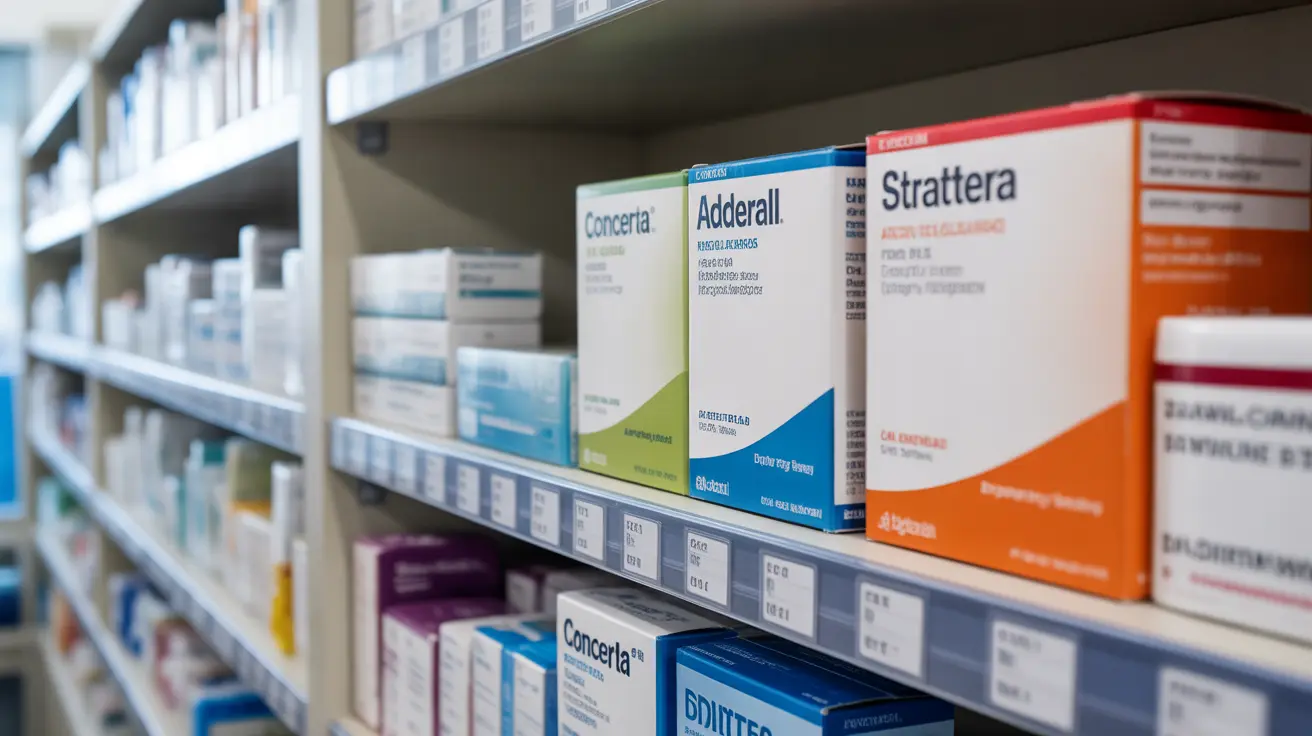Understanding the various ADHD medication options available is crucial for patients, caregivers, and healthcare providers seeking effective treatment strategies. From stimulant medications that have long been considered the first-line treatment to newer non-stimulant alternatives, the range of options continues to evolve to meet diverse patient needs.
This comprehensive guide explores the most commonly prescribed ADHD medications, their differences, and important considerations for treatment success.
Common Stimulant Medications for ADHD
Stimulant medications remain the most frequently prescribed treatments for ADHD, with demonstrated effectiveness in approximately 70-80% of patients. These medications work by increasing dopamine and norepinephrine levels in the brain.
Methylphenidate-Based Medications
Methylphenidate medications include several popular options:
- Concerta (extended-release)
- Ritalin (immediate and extended-release forms)
- Focalin (immediate and extended-release forms)
- Quillivant XR (liquid formulation)
Amphetamine-Based Medications
Amphetamine medications offer another effective treatment approach:
- Adderall (immediate and extended-release)
- Vyvanse (lisdexamfetamine)
- Dexedrine (dextroamphetamine)
Non-Stimulant ADHD Medications
Non-stimulant medications provide alternative treatment options for patients who cannot tolerate stimulants or have specific medical conditions that preclude stimulant use.
Common Non-Stimulant Options
Several FDA-approved non-stimulant medications are available:
- Strattera (atomoxetine)
- Intuniv (guanfacine)
- Kapvay (clonidine)
- Qelbree (viloxazine)
Choosing the Right Medication
The selection of ADHD medication depends on various factors, including:
- Patient age and weight
- Severity of symptoms
- Presence of co-existing conditions
- Previous medication experiences
- Daily schedule and lifestyle needs
- Insurance coverage and cost considerations
Monitoring and Adjusting Treatment
Regular monitoring is essential for optimal treatment outcomes. Healthcare providers typically assess:
- Symptom improvement
- Side effect occurrence and severity
- Changes in vital signs
- Growth in children and adolescents
- Overall quality of life improvements
Frequently Asked Questions
What stimulant and nonstimulant medications are commonly prescribed for ADHD?
Common stimulant medications include methylphenidate (Concerta, Ritalin) and amphetamines (Adderall, Vyvanse). Non-stimulant options include Strattera, Intuniv, Kapvay, and Qelbree. Each medication type works differently to manage ADHD symptoms.
How do Concerta and Adderall differ in their active ingredients and duration of effect?
Concerta contains methylphenidate and typically lasts 12 hours with a single daily dose. Adderall contains mixed amphetamine salts and comes in immediate-release (4-6 hours) and extended-release (10-12 hours) formulations. The choice between them often depends on individual response and lifestyle needs.
What are the typical side effects of Concerta and Adderall, and how can they impact daily life?
Common side effects include decreased appetite, sleep difficulties, headaches, and mild anxiety. Concerta may have a smoother effect profile, while Adderall might cause more pronounced appetite suppression. Effects typically improve with dosage adjustments or timing modifications.
How should the dosing schedule of Concerta or Adderall be adjusted based on individual needs?
Dosing adjustments should be made gradually under medical supervision, considering factors like symptom control, side effects, and daily routines. Initial doses are usually lower and may be increased slowly until optimal benefit is achieved with minimal side effects.
When might a healthcare provider recommend nonstimulant ADHD medications instead of stimulants?
Non-stimulants may be recommended when patients have anxiety disorders, cardiovascular conditions, or a history of substance abuse. They're also considered when stimulants prove ineffective or cause intolerable side effects, or when consistent 24-hour symptom control is needed.




